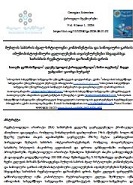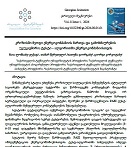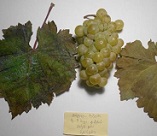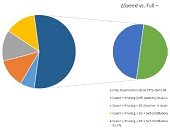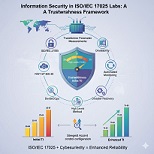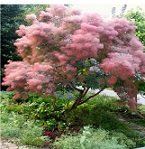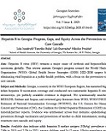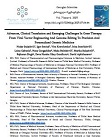The results of physical modeling of fires for road tunnels
Downloads
The paper gives the results of a fire development study using physical models of inclined vehicular traffic tunnels scaled 1:60. The tunnel inclination varied within 0-10% with a 2% increment. The fire strength initiated and developed in a natural tunnel varied within 5-15 MW with a 5 MW increment. The length of the natural tunnel was 360 m, width: 8 m, height: 6 m, cross-sectional area: 48 m2, and the tunnel width and height ratio: 1.33. The model of the natural tunnel of the given geometry was made of a 2-mm-thick stainless steel sheet with an appropriate scale. The sizes of the tunnel model are: length: 6 m, width: 0.16 m, height: 0.12 m, and cross-sectional area: 0.0192 m2. By doing experiments on this model, we studied the nature of propagation of gases (smoke) emitted during the fire initiation and development, specified the impact of the gradient factor on the rate of variability of the critical velocity and backlayering distance. The said characteristics were studied according to the air temperature variability in the tunnel model. The air temperature was measured with K-type thermocouples equipped with open and closed detectors. Maximum measuring temperature was 800°C. The thermocouples were installed in the ceiling of the tunnel model along the entire length, with 5 and 10 cm increments. The fire was modeled with natural gas. Ventilation air was supplied into the model by an axial fan from one portal of the model. The velocity of the ventilation air was measured with an anemometer, and the air discharge was calculated at every moment according to the velocity. The required strength of the modeled fire was provided by natural gas, and the measurement was done with a volumetric and mass regulatory meter. Simultaneous data collection, processing, analysis and digital transmission of data from the K-type thermocouples, anemometers and natural gas flow meters were provided with DT-85 Datataker. The obtained results can be used to develop road tunnel ventilation projects that take into account the impact of fires on ventilation.
Downloads
Metrics
P.H. Thomas (1958) Fire Research Notes 351, Available on http://www.iafss.org/publications/frn/351/-1.
P.L. Hinkley (1970) The flow of hot gases along an enclosed shopping mall - a tentative theory. Fire Research Notes 807, Fire Research Station, Watford, UK.
A.J.M. Heselden (1976) Studies of fire and smoke behavior relevant to tunnels. In: Proceedings of the 2nd International Symposium of Aerodynamics and Ventilation of Vehicle Tunnels. Cambridge University Press, pp. 1–6.
N.H. Danziger, and W.D. Kennedy (1982) 4th International Symposium on the Aerodynamics & Ventilation of Vehicle Tunnels, 169-186.
World Road Association (1999) Fire and smoke control in road tunnels. PIARC Report 05.05.B, World Road Association.
National Fire Protection Association (2011) NFPA 502 Standard for road tunnels, bridges, and other limited access highways. National Fire Protection Association, Quincy, US.
National Fire Protection Association (2014) NFPA 502 Standard for road tunnels, bridges, and other limited access highways. National Fire Protection Association, Quincy, US.
Y.Z. Li, H. Ingason, and L. Jiang (2018) Influence of tunnel slope on smoke control (RISE Research Institutes of Sweden).
Y.Z. Li, and H. Ingason (2018) Fire Safety Journal 99, 22-26.
COMMISSION DIRECTIVE 2004/102/EC (2004) On minimum safety requirements for tunnels in the Trans-European Road Network, THE EUROPEAN PARLIAMENT AND OF THE COUNCIL OF THE EUROPEAN UNION, On line at: http://www.ocean-commerce.co.jp/ISPM_Report/pdf_countries/EUDirective2004102EC.pdf
TRANS/AC 7/9 (2001) RECOMMENDATIONS OF THE GROUP OF EXPERTS ON SAFETY IN ROAD TUNNELS, Economic and Social Council, Multidisciplinary Group of Experts on Safety in Tunnels, On line at: https://unece.org/DAM/trans/doc/2002/ac7/TRANS-AC7-09e.pdf
TRANS/AC 7/11 (2002) REPORT OF THE AD HOC MULTIDISCIPLINARY GROUP OF EXPERTS ON SAFETY IN TUNNELS ON ITS FIFTH SESSION, Economic and Social Council, Multidisciplinary Group of Experts on Safety in Tunnels, On line at: https://unece.org/fileadmin/DAM/trans/doc/2002/ac7/TRANS-AC7-11e.pdf
A. Vaitkevicius, and R. Carvel (2016) Investigating the Throttling Effect in Tunnel Fires. Fire Technology, Vol. 52, pp. 1619–1628.
A.N. Beard, and R.O. Carvel (2005) The Handbook of Tunnel Fire Safety, Thomas Telford Publishing, London.
Ilias N., Lanchava O., Nozadze G. (2017) Numerical modelling of fires in road tunnels with longitudinal ventilation system. Supplement of Quality-Access to Success, 18, 85-88.
O. Lanchava, G. Abashidze, and D. Tsverava (2017) Securing fire safety for underground structures. Quality-Access to Success, Vol. 18, S1, pp. 47-50.
F. Tang, Z.L. Cao, A. Palacios, and Q. Wang (2018) A study on the maximum temperature of ceiling jet induced by rectangular-source fires in a tunnel using ceiling smoke extraction. International Journal of Thermal Sciences, 127, 329–334.
O. Lanchava, N. Ilias, G. Nozadze, and S.M. Radu (Jan 2019) Heat and hygroscopic mass exchange modeling for safety management in tunnels of metro. Quality Access to Success, Vol. 20, S1, pp. 27-33.
O. Lanchava, N. Ilias, G. Nozadze, S.M. Radu, R.I. Moraru, Z. Khokerashvili, and N. Arudashvili (2017) The impact of the piston effect on the technological characteristics of ventilation in the subway tunnels. Proceedings of 8th International Symposium “Occupational Health and Safety” SESAM 2017, Bucharest, pp. 342-352.
A. Kashef, Z. Yuan, and B. Lei (2013) Ceiling temperature distribution and smoke diffusion in tunnel fires with natural ventilation, Fire Safety Journal 62, 249–255.
O. Lanchava (2020) Analysis of the parameters of the fire modeled in a road tunnel, GEORGIAN SCIENTISTS 2 (4).
G.T. Atkinson, and Y. Wu (1996) Smoke control in sloping tunnels. Fire Safety Journal, 27, 335–341.
J. Li, Y.F. Li, C.H. Cheng, and W.K. Chow (2019) A study on the effects of the slope on the critical velocity for longitudinal ventilation in tilted tunnels. Tunneling and Underground Space Technology, 89, pp. 262-267.
O. Lanchava, and N. Ilias (2020) Critical velocity analysis for safety management in case of tunnel fire. MATEC Web of Conferences 305, 00023.
Y.-P. Lee, and K.-Ch. Tsai (2012) Effect of vehicular blockage on critical ventilation velocity and tunnel fire behavior in longitudinally ventilated tunnels, Fire Safety Journal 53, 35–42.
O. Lanchava, N. Ilias, G. Nozadze (Jan 2017) Some problems for assessment of fire in road tunnels. Quality Access to Success, Vol. 18, S1, pp. 69-72.
O.A. Lanchava (1982) Heat and mass exchange in permanent mine workings. Soviet Mining 18 (6), 529-532.
O.A. Lanchava (1986) Heat and mass exchange in newly driven mine workings. Sov. Min. Sci. (Engl. Transl.); (United States) 21 (5).
O.A. Lanchava (1998) Hygroscopic heat and mass transfer in underground structures, GTU, Tbilisi, 272.
H. Ingason, and Y.Z. Li (2010) Model scale tunnel fire tests with longitudinal ventilation. Fire Safety Journal, 45, 371–384.
H. Wan, Z. Gao, J. Han, ... Y. Zhang (2019) A numerical study on smoke back-layering length and inlet air velocity of fires in an inclined tunnel under natural ventilation with a vertical shaft. International Journal of Thermal Sciences, Volume 138, pp. 293-303.
C.G. Fan, J. Yang (2017) Experimental study on thermal smoke backlayering length with an impinging flame under the tunnel ceiling. Experimental Thermal and Fluid Science. 82, pp. 262–268.
X. Guo, X. Pan, Z. Wang, J. Yang, M. Hua, J. Jiang (2018) Numerical simulation of fire smoke in extra-long river-crossing subway tunnels. Tunneling and Underground Space Technology, Vol. 82, pp. 82-98.
O. Lanchava, N. Ilias, G. Nozadze, S.M. Radu, R.I. Moraru, Z. Khokerashvili, and N. Arudashvili (2019) FDS Modelling of the Piston Effect in Subway Tunnels. Environmental Engineering and Management Journal. 18 (4), pp. 317-325.
O. Lanchava, and N. Ilias (2018) Complex calculation method of temperature, mass transfer potential and relative humidity for ventilation flow in subway. Technical Sciences 3 (1), 69-84.
O. Lanchava, and N. Ilias (2017) Some issues of thermal calculation of ventilation air for the metro. Journal of Engineering Sciences and Innovation 2 (2), 92-105.
O. Lanchava, G. Nozadze, N. Bochorishvili, Z. Lebanidze, N. Arudashvili, M. Jangidze, and K. Tsikarishvili (2014) Criteria for evaluation of emergency firefighting in transport tunnels. “Transport Bridge Europe-Asia”, Materials of International Conference, 29-34.
O. Lanchava, N. Ilias, S.M. Radu, L. Makharadze, T. Kunchulia, N. Arudashvili, Z. Khokerashvili (2020) A system of transformable crosspieces to block harmful combustion product propagation in tunnels. Web-page “Association for Science”.
N. Ilias, O. Lanchava, and G. Nozadze (2020) Numerical simulation of air flow in short metro ventilation shafts caused by a piston effect. MATEC Web of Conferences 305, 00050.
O.A. Lanchava, G. Nozadze, N. Arudashvili, and Z. Khokerashvili (2021), TO DETERMINATION OF VENTILATION AIR OF THE METRO OF TBILISI BY THERMAL FACTOR. GEORGIAN SCIENTISTS 3 (1).

This work is licensed under a Creative Commons Attribution-NonCommercial-NoDerivatives 4.0 International License.





















